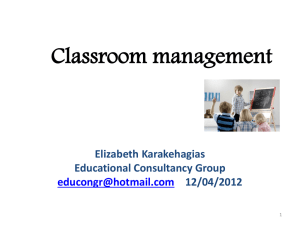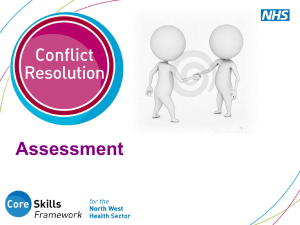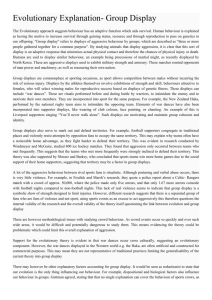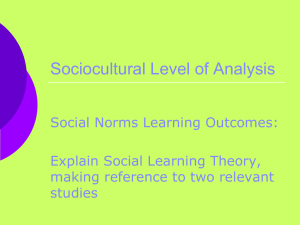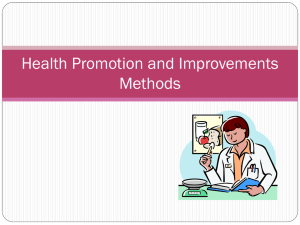Open
advertisement
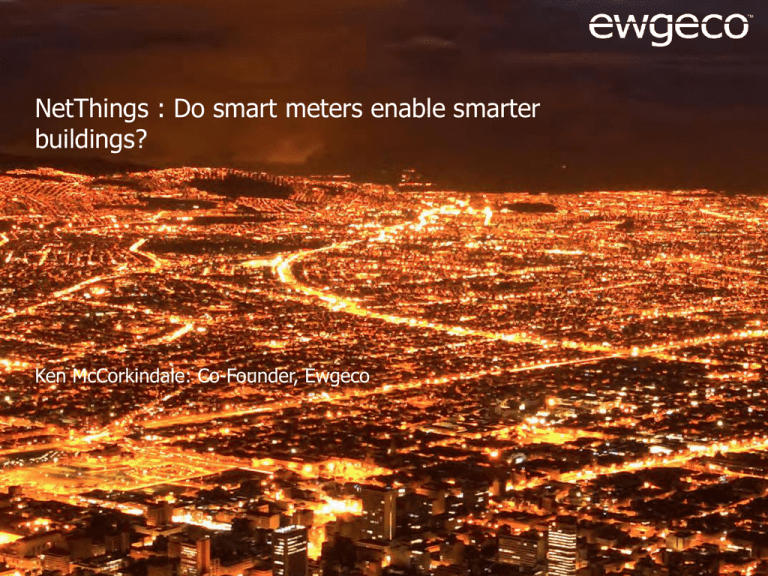
NetThings : Do smart meters enable smarter buildings? Ken McCorkindale: Co-Founder, Ewgeco 1st generation energy displays • The 1st multi-channel real time display device. Electricity, water, gas, heat, renewables …. • Intuitive and simple, easy to understand - minimal effort • Persistent user engagement, behaviour change leads to reduced consumption. • Designed in 2007 – pre-smart phones • Intuitive, engaging web service Small display in large office spaces – staff notice it and understand at a glance It has to be easy Most users just want the at a glance information. Some use additional functionality. • Dashboard interfaces update in real time (nearly) • Collect data from multiple zones for centralised viewing & analytics • Provide staff with simple PC based interfaces for comparison/targeting • Export data to third party data analytics platforms • Combination of local displays and web based interface improves engagement Well designed local displays deliver savings to domestic homes • 2010-12: UK Government CERT scheme rolled out millions of low value energy displays – consumers did not engage well, utilities saw little benefit. <1% savings. • The CERT displays involved were poorly designed, users don’t engage with poor design, so they don’t change behaviour • Smart meter roll-out business case relies upon consumers changing behaviour. User engagement is critical for success. • Ewgeco social housing scheme 50 houses – average reduction in energy use of 16.5%. • Global study shows smart meters with IHDs save average 8.7% (Vassa ETT) • Make it simple, intuitive and useful and users will engage Well designed local displays deliver savings to businesses • Simplicity – Energy management without the need to log in – Highly visible but unobtrusive – at a glance understanding – Instant feedback when behaviour is changed • Cost Savings – Immediate results – staff see effects of actions – Persistent savings – display becomes part of daily pattern – ROI for systems is normally less than 1 year • Behaviour change – Engage and empower all staff in energy efficiency – Energy Champion programmes – Displays can unlock additional savings through staff engagement Next Generation Displays • Better technology - more affordable • Enabling more engaging UI design Usage pattern today so far Current consumption compared to target Touch screen • Simple, easy to understand, relevant & timely information helps us make good decisions about our energy use Consumers expectations are changing I want information & advice on my preferred interface The right information at the right time to help me make decisions Consumer behaviour & expectations are different on different interfaces Web service – user spends more time, usually sitting, detail, analysis Mobile device – seconds, on the move, high level, instant, fast response Energy display device – walking by, at a glance, standing, 1-2 minutes Smart meters will give us lots of data - more engagement? more behaviour change? • What motivates users to change behaviour? Can technology help? • Timing is important – when are users most receptive to messages. Reminders at the decision point. Feedback at the point of experience. • Trust – consumers needs to trust the technology to serve them reliably. • Design to respond to the motivations different people have for changing behaviour, some want to save money, some want to care for the environment, some are motivated simply by not wanting to waste. Smart meters can help us design better building energy management solutions Use energy data to deliver targeted and timely messages Incentivise users to care and take action Introduce automated control - how much automation will consumers accept/desire? People are busy Not another gadget OK, I’m using too much, tell me what to do! People change behaviour when they’re engaged & incentivised Reasons people change behaviour: comfort, convenience, control, money, fun, fear Make Energy Information Relevant • People are influenced by their social network, showing energy usage & behaviour in the context of their peers, neighbours & family helps make it a subject they engage with • How does my energy use compare with colleagues, other offices, teams? Domestic consumers behaviour - Opower • How we feel we compare with others can strongly influence our behaviour • Opportunities to share information, create common goals within teams What if we could provide feedback and deliver automated consumer control in almost real time? We’d need a lot of stuff going on in the background…….. • • • • Sensors to collect lots of different data A means of sending it all to a central location Data analytics to make sense of it Algorithms to change the data into meaningful communications to send back to targeted users • • User interfaces to deliver messages in a compelling/engaging way Controls to enable user choices to be instantly turned into actions that reduce energy wastage • Feedback to tell the user that he’s made a change and it’s had a positive effect The UK smart meter model Metering data is kept within the dashed red line (below). Two places where a third-party product or service can, with the consumer’s permission, reach across this line to access metering data: [1] Remotely from the DCC This would typically be a service that the consumer signs-up to online. [2] Locally in the home via an In Home Display - IHD [3] Consumer Access Device. This would typically be self-installed by the consumer. Customer services that directly engage staff Coffee Shops UK John • Targeted messages to staff • Comparisons to similar stores • Monetary incentive • Timing, motivation, trust • Persistent engagement Targeted feedback and instant control choices • Build trust with users and they will feel comfortable to delegate control to automation Engagement & communications How it should be…. • Big data, business intelligence, next gen analytics will deliver more effective targeted communications to staff and end-users • • • Personalised value (products and services) But its one way communication Opportunity to better engage with consumers, co-creation, co-innovation • Let consumers share in the creation of value and they’ll engage better and change behaviour

